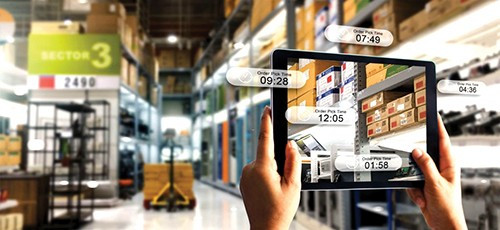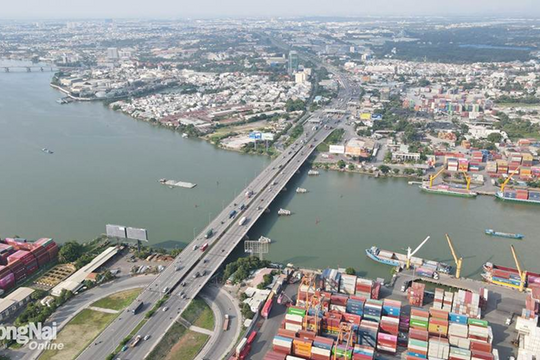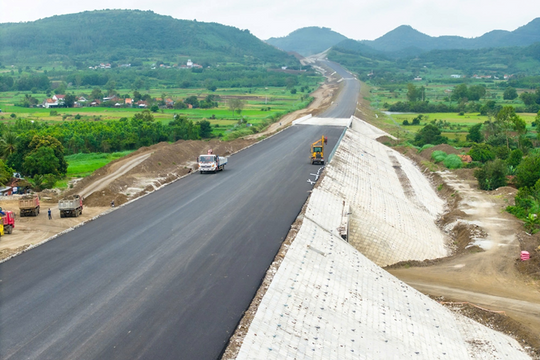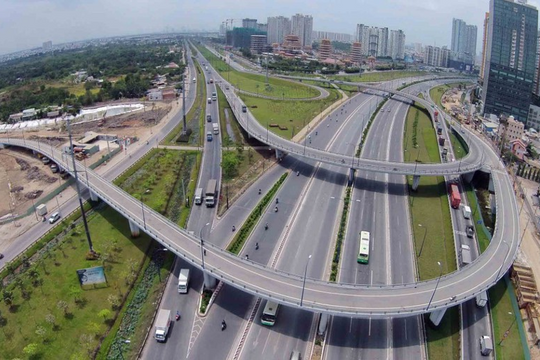
The impact of the COVID-19 pandemic on our service supply chain
The COVID-19 pandemic that broke out in January 2020 has had a strong impact on all aspects of global economy – in term of economic, finance, politic, socio-culture, diplomacy and human health. By April 26th, 2020 the number of deaths had risen to over 200,000. The pandemic has disrupted the global supply system including logistics which is an important link in the supply chain network. Vietnam’s economy has been badly hit. GDP growth of Quarter I/2020 was only 3.82% - the lowest level in the last 10-year period (2011 - 2020); Importexport encountered many difficulties, in the first quarter of 2020, revenue from this sector was only USD 122.73 billion. Since then, production, circulation, distribution and import-export - the main customer segment of the logistics service industry, have significantly declined, making logistics service providers face many obstacles in their financial liquidity and their employee’s future employment prospects.
According to VLA’s survey, 15% - 50% of its members’ activities has been decreasing in overall actions and revenues, depending on the type of service they provide. Air, road and rail logistics services are most affected, especially during the period of social isolation. 80% of VLA’s members are SME’s (Small and mediumsized enterprises) so it is projected that if the COVID-19 pandemic continues, many of them will be forced to delay operation or in the most serious case to fill a bankruptcy form.
The COVID-19 pandemic has shown us not to be too dependent on some of the world’s leading economies in the supply chain network. Logistics operations are affected once the network is hit heavily, notably in the inventory activities. However, the pandemic also indirectly promotes the development of e-commerce, which is a catalyst for digital transformation businesses. Digital transformation - an objective and urgent requirement for the logistics service industry.
What is digital transformation and how is it different from digitalization
According to experts, digitalization is the conversion of real values into numbers, and digital transformation is the process of applying technologies – for instance: AI, Bigdata into digitized data in order to analyze, to transform the data and to create another value. Therefore, logistics service providers need to follow digital transformation to trànorm the stagnation, create a breakthrough to improve competitiveness, reduce logistics costs, grow their business, acquire more customers and achieve maximum profits that are outstanding compared to before digital conversion.

Benefit of digital transformation: Digital transformation brings many benefits such as reducing operating costs, reaching more customers in longer time, leaders making decisions more quickly and accurately thanks to the timelyefficient reporting system, and employees working more effectively. Thereby, operational efficiency and competitiveness of the business is vastly improved. Specifically, we are speaking with the following benefits:
» Removing the gap between departments: In reality, enterprises that have not applied digital transformation are facing a common problem in which there is almost no information link and no cohesion between departments, because each of the department uses a separate software. This has caused the common work to be clogged for unknown reasons, resulting in a series of negative impacts on the business, falling revenue, and customer service - one of the most critical tasks of logistics service, is limited. When applying digital transformation, company has created a platform to connect all departments, but each still has the functional tools to serve the professional business and still be able to communicate with each other. Through these connections, problems are quickly to be identified and prevented before they occur and will be dealt with quickly.
» Increasing transparency and efficiency in the corporate governance system: Instead of having to wait for employees to send reports via email or hard copy as before, business owners can take the initiative to view different report types they want at any time through the system. This is a huge benefit of digital transformation. All operating activities are logged and monitored carefully through enterprise management software, helping the C-suite officers to discover which areas are needed for improvement.
» Improving employee productivity and as a result improving the competitiveness of the business to provide better customer service.
How logistics service providers should transform
In Vietnam’s logistics service industry, information technology has been pick up a lot of interest; the digital transformation process has started to take place due to the involvement of international transactions. Even though Vietnam has a relatively sufficient e-commerce legal framework that allows digital transformation, Vietnamese logistics service enterprises in general, especially small and medium-sized ones, are still not fully aware of the role of digital transformation in the fourth industrial networks because of the barriers they are facing such as lack of digital skills and human resources, lack of information technology platform that are modern enough to allow digital transformation, lack of digital thinking and, above all, lack of financial capacity.
From the actual situation, the speakers and experts have given advice to logistics service providers in our country. There are three things to do. The first thing is the readiness of leadership. Leaders need to understand what they want and how technology can transform their company. It requires the change in thinking from leaders to employees on digital transformation. The second is the readiness of organization. It requires the participation of the whole organization to make the transition in personnel training and development. The final third is the readiness of technology. This needs to be developed coherently with personnel training.

The digital transformation must be solid, consistent with the roadmap that is suitable with the capabilities of the business. Enterprise need to be able to do the following: reviewing objectives, re-evaluating existing data, deciding whether to improve the overall operation or part of it, selecting the suitable technology solution provider.
Currently, Vietnamese enterprises are providing 2 to 17 different logistics services, mainly include forwarding, transportation, warehousing, express delivery and customs declaration services. 50% to 60% of the enterprises is applying different types of technology, depending on the size and nature of services provided. As mentioned above, the biggest obstacle for businesses is financial capacity hence here we would like to mention a specific technology for our readers to visualize the difficulty of digital transformation of small and medium logistics enterprises. CargoWise One is an international well-known technology platform and DTK Logistics Solution is the business provider in Vietnam.
Cargowise One (CW1) platform integrates all business activities, ranging from CRM (customer relationship management, marketing, sales...) to operation activity (bookings, shipment monitoring, manifest submission…). The platform includes many modules such as Customs, TMS, WMS, Freight Forwarding ... integrated in the same system (integrated system), and is charged based on user headcount and number of transactions. CW1 is hosted on cloud at 3 data centers based in Australia, UK and USA. For businesses of 25 - 50 people, the cost of total usage is estimated to be around 50m VND to 150m VND per month. CW1 has very high flexibility (customization through configuraration); users, one year to pay from 1 billion to 1.5 billion VND.
Meanwhile, software for forwarding, transporting, and single warehousing is operating independently, thus solve the problem of digitalization solely but not digital transformation. Currently, one typical delivery software would cost around 100m VND to 200m VND, paid fully once, and then there is an annual maintenance fee of about 10% - 20%.









.png)

.png)


.png)
.png)




